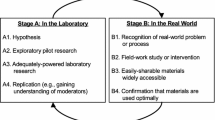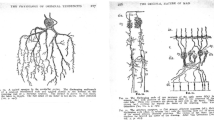Abstract
In their target article, Byrnes and Fox (1998) argue that many of the recent findings from the field of cognitive neuroscience have particular importance for education. In our commentary, we lend support to their contention by reporting on some of our work that has potential relevance to the proposed interface between cognitive neuroscience and education. Specifically, we discuss the findings from several studies investigating the neuropsychology of intellectual giftedness, and sex differences in the brain, each of which suggest a unique functional organization that differentiates gifted from average ability adolescents, as well as males from females. We further propose that the translation of cognitive neuroscience findings into specialized classroom instructional methods which capitalize on the plasticity of the brain, as well as the apparent individual differences in its functional organization, may be the most significant challenge facing those in the front-lines of educational practice.
Similar content being viewed by others
REFERENCES
Bach-y-Rita, P. (1990). Brain plasticity as a basis for recovery of function in humans. Neuropsychologia, 28: 547–554.
Begley, S. (February 19, 1996). Your child's brain. Newsweek 55–62.
Bruer, J. T. (1997). Education and brain: A bridge too far. Educ. Res. 26: 4–16.
Byrnes, J. P., and Fox., N. A. (1998). The educational relevance of research in cognitive neuroscience. Educ. Psychol. Rev. 10: 297–342.
CarnegieTask Force (1996). Years of promise: A comprehensive learning strategy of America's children. New York: Carnegie Corporation of New York.
De Renzi, E. (1997). Visuospatial and constructional disorders. In Fienberg, T., and Farah, M. (eds.), Behavioral neurology and neuropsychology McGraw-Hill, New York, pp. 297–307.
Deutsch, G., and Halsey, J. H., Jr. (1991). Cortical bloodflow indicates frontal asymmetries dominate in males but not females during task performance. J. Cereb. Bloodflow Metab. 11: S787.
Education Commission of the States (1996). Bridging the gap between neuroscience and education, Education Commission of the States, Denver, CO.
Gill, H. S., and O'Boyle, M. W. (1997). Sex differences in matching circles and arcs: A preliminary EEG investigation. Laterality 2: 33–48.
Goldman-Rakic, P. S. (1996). What can neuroscience contribute to education? In Bridging the gap between neuroscience and education, Education Commission of the States, Denver, CO, pp.11–12.
Halpern, D. F. (1992). Sex differences in cognitive abilities (2nd Ed.), Erlbaum, Hillsdale, NJ.
Hellige, J. B. (1993). Hemispheric asymmetry: What's right and what's left Harvard University Press, Cambridge.
Kaas, J. H. (1991). Plasticity of sensory and motor maps in adult mammals. Annu Rev. Neurosci. 14: 137–167.
Kimura, D. (1992). Sex differences in the brain. Sci. Am. 267: 118–125.
Krumhansl, C. L. (1991). Music psychology: Tonal structures in perception and memory. In Rosenweig, M., and Porter, L. (eds.), Annual review of psychology (Vol. 42), Annual Reviews, Palo Alto, CA, pp 277–303.
Levy, J., Heller, W., Banich, M., and Burton, L. (1983). Perceptual asymmetry in free-viewing of chimeric faces. Brain Cognit. 2: 404–419.
McGilly, K. (1994). Classroom lessons: Integrating cognitive theory and classroom practice, MIT Press, Cambridge, MA.
McGlone, J. (1980). Sex differences in human brain activity: A critical review. Behav. Brain Sci. 3: 215–263.
Mogilner, A., Grossman, A. T., Ribary, V., Joliot, M., Volmann, J., Rapaport, D., Beasley, R., and Llinas, R. (1993). Somatosensory cortical plasticity in adult humans revealed by magnetoencephalography. Proc. Nat. Acad. Sci. USA 90: 3593–3597.
O'Boyle, M. W., and Benbow, C. P. (1990). Enhanced right hemisphere involvement during cognitive processing may relate to intellectual precocity. Neuropsychologia 28: 211–216.
O'Boyle, M. W. and Hellige, J. B. (1989). Cerebral hemisphere asymmetry and individual differences in cognition. Learn. Indiv. Diff. 1: 7–35.
O'Boyle, M. W., and Hoff, E. (1987). Gender and handedness differences in mirror tracing random forms. Neuropsychologia 25: 977–982.
O'Boyle, M. W., Alexander, J. E., and Benbow, C. P. (1991). Enhanced RH activation in the mathematically precocious: A preliminary EEG investigation. Brain Cognit 17: 138–153.
O'Boyle, M. W., Benbow, C. P., and Alexander, J. E. (1995a). Sex differences, hemispheric laterality and associated brain activity in the intellectually gifted. Devel. Neuropsychol. 11: 415–433.
O'Boyle, M. W., Hoff, E. J., and Gill, H. S. (1995b). The effects of mirror reversals on the performance of males and females in spatial tasks. Person. Indiv. Dif. 18: 693–699.
O'Boyle, M. W., Gill, H. S., Benbow, C. P. and Alexander, J. E. (1994). Concurrent finger-tapping in mathematically gifted males: Evidence for enhanced right hemisphere involvement during linguistic processing. Cortex 30: 519–526.
Phye, G. D., and Andre, T. A. (1987). Cognitive classroom learning: Understanding, thinking and problem solving. Academic Press, New York.
Ramachandran, V. S. (1993). Behavioral and magnetoencephalographic correlates of plasticity in the adult human brain. Proc. Nat. Acad. Sci. USA 90: 10413–10420.
Sackeim A., Gur, R., and Saucy, M. (1978). Emotions are expressed more intensively on the left side of the face. Science 202: 434–436.
Schlaug, G., Jancke, L., Huang, Y., and Steinmetz, H. (1995). In vivo evidence of structural brain asymmetry in musicians. Science 267: 699–701.
Shaywitz, B. A., Shaywitz, S. E., Pugh, H. K., Constable, R. T., Skudlarski, P., Fullbright, R. K., Bronen, R. A., Fletcher, J. M., Shankweiler, D. P., Katz, L., and Gore, J. C. (1995). Sex differences in the functional organization of the brain for language. Nature 373: 607–609.
Springer, S. P., and Deutsch, G. (1998). Left brain, right brain (5th Ed.), W.H. Freeman, New York.
U.S. Department of Education (1996). Building knowledge for a nation of learners: A framework for education research 1997, U.S. Department of Education, Office of Educational Research and Improvement, Washington, D.C.
Viadero, D. (September 18, 1996). Brain trust. Education Week 31–33.
Author information
Authors and Affiliations
Rights and permissions
About this article
Cite this article
O'Boyle, M.W., Gill, H.S. On the Relevance of Research Findings in Cognitive Neuroscience to Educational Practice. Educational Psychology Review 10, 397–409 (1998). https://doi.org/10.1023/A:1022889317826
Issue Date:
DOI: https://doi.org/10.1023/A:1022889317826




